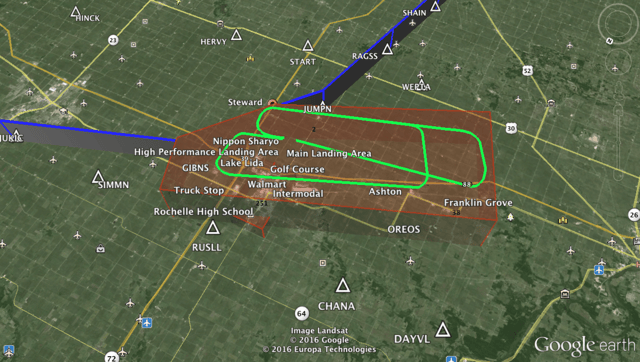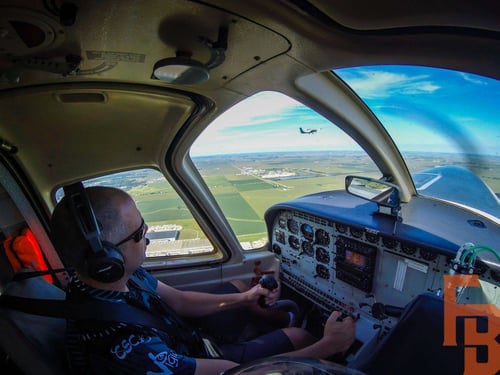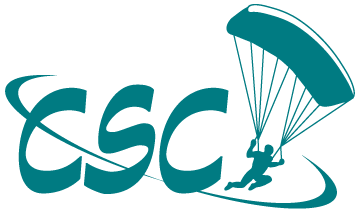If you're skydiving, you're probably just looking for a quick ride in an airplane. Typically, jumpers are focused on the freefall ahead, but rarely give much thought to the person in the cockpit. At many dropzones, few jumpers even know the pilot's name.
Some say jump pilots are the unsung heroes of skydiving. I'm not sure about that, but we certainly have to manage a lot of variables from the lonely front seat.
At Chicagoland Skydiving Center, one of our core beliefs is that the pilot should be in communication with the jumpers. Develop trust, understand the skydives being made, and create a real connection so everyone works together on every load. As the owner and manager of aircraft - as well as the pilot in command on thousands of skydiving flights - I believe that much of the responsibility falls on me to promote safety on the dropzone.
I grew up in an aviation family, so I've had a healthy respect for operating aircraft from a young age. My father was a career airline pilot. My brother is one now. I remember sitting on phone books to reach the pedals flying with my Dad. Now, I manage multiple aircraft and train jump pilots every season. The path I have taken in aviation will probably never make me rich, but it has given me an opportunity to do fun, challenging, extremely active piloting.
As thoughts of the pilot from the movie Fandango fill your head...think again. It takes a true professional to be a great jump pilot. So what are we doing up there?
CONTROLING THE AIRCRAFT
The majority of the general public is familiar with commercial aviation. Their flight experiences involve straight and level flight in aircraft with many autopilot features.
Flying skydivers is entirely different. Jump pilots don't have autopilot buttons. We spend all day making many take offs and landings, every 15-20 minutes so over the course of 8-12 hours, usually with changing wind conditions.
We must also keep the plane balanced, on heading, and speed consistent with 20+ people moving around in the back, and varied amounts of weight jumping out the door every few seconds. The weight and balance changes are almost endless, depending on the fuel levels and group sizes that happen to be on board for any given load.
MANAGING AIRSPACE
CSC has a very structured approach to flight operations. It's a high volume dropzone, often with multiple aircraft flying jumpers on the same day. It also happens to be located on a municipal airport, which means general aviation pilots can fly there in addition to our skydiving aircraft. That means every few minutes, a plane is either taking off or landing, someone is entering freefall or flying a parachute in this airspace.
Most dropzones establish flight areas they stick to. Just like cars drive on roads, there are set "lanes" we use for climbs and descents, to be sure aircraft have adequate separation from jumpers and aren't flying too low over our neighboring homes and farms. Think of these like 3D race tracks in the sky, that take us from the runway to the spot we turn on the green light for jumpers to exit, and back down to pick up the next group.

When CSC moved from Hinckley to Rochelle in 2010, one of the big projects was collaborating with the FAA and Air Traffic Control to be sure our jump activity could safely happen alongside aircraft headed for major airports about 70 miles away. During this process, the offices agreed to create a waypoint (called JUMPN) to route traffic in Chicago O’Hare Airport’s 10C arrival route around the dropzone. This helps create ample clearance between commercial traffic and skydiving operations.
FAA officials have said that CSC is the best dropzone in Chicago as related to ATC arrival and departure routes near one of the busiest airports in the World. CSC did plenty of due diligence when relocating to Rochelle, IL. Our continued open communication and collaboration with the FAA and the multiple air traffic control agencies that oversee the skies over Chicago help to keep all of us safe as well.
COMMUNICATING WITH PASSENGERS
Keeping the skies safe for all this activity takes a lot of communication. Pilots are in constant contact with our manifest office, ground crew, other pilots in the airspace, air traffic control, and the jumpers inside their airplane. CSC talks with three different Air Traffic Conrol agencies on every flight: Rochelle Airport, Rockford ATC, and Chicago Center. As you might expect, some days there can be quite a bit of information to handle while trying to stay focused on the flight.
I hold myself, and my staff pilots to higher standards than most of the skydiving industry when it comes to communication with the jumpers. Some of our flight standards at CSC:
- As we taxi to the runway for takeoff, we remind jumpers on board of the jumprun heading, and note if that has changed from earlier that day. We also confirm scheduled altitude passes.
- Our pilots announce the jump run starting point, ground speed, and exit separation before we give the light to open the door.
- Throughout jumprun (the part of the flight when the door is open and people are jumping out), we give updates every 10-15 seconds about how far away from the center of the airport they are. This is a courtesy, particularly to the tandem instructors waiting for all the experienced jumper groups to go ahead. As the end of jumprun nears, they know the exit point will allow them to fly their parachute back to the landing area.
While these items are not required or industry standard, we have seen the positive effects of more informed jumpers. We are told often from skydivers visiting from other dropzones that these announcements are one of their favorite parts of the CSC experience.
PLANNING & NAVIGATION
One of the biggest challenges is reading the winds aloft, making an educated guess about freefall and parachute drift, and planning the flight to reach the perfect altitude, the proper distance from the intended landing area. Honestly, it is an art form, and jump pilots take great pride in getting "the spot" right. We certainly hear it about when we don't - and need to quickly take that feedback and create new flight plans.
Sometimes, there are multiple passes per load, meaning that different groups of jumpers will be getting out at different altitudes. Imagine flight planning for jumpers to exit at 5,000ft 9,000ft, and 14,000ft exit all on the same load, with different wind strengths at each layer. While GPS helps with accuracy to execute a flight plan, the pilot is still responsible for the green light, and if all 24 people are within range to get back home to the airport.
Add additional skydiving aircraft to the equation on busy days or formation loads. We really must plan the flight and fly the plan.

MAINTAINING OPERATIONAL EFFICIENCY
The goal of the jump pilot is to fly the plane's maximum operating performance, for as much of the day as possible. Fuel isn't cheap, especially when you are running turbine aircraft. We need to keep turning loads fast, doing our part to enable manifest to have a predictable flow to the day and get as many people in the air as we can before the sun sets. The aircraft pace is the heartbeat of the dropzone, so we can't lose momentum by wasting time.
STAYING ALERT
It's not uncommon for a pilot to fly 30+ loads of skydivers on a busy weekend day at CSC. This is a huge sensory challenge, with almost 800,000ft of altitude change over the course of the day, while being bombarded by vibration, engine noise, temperature changes, pressure changes, and countless pieces information coming through over the radio. These factors can take a toll on the body and mind.
Sometimes, my support system in manifest has to remind me to have a snack or drink some water. And we keep several pilots on the schedule as often as we can so we can help fill in for each other for a quick bathroom break here and there.
I have loved the opportunity to build the majority of my flight hours as a skydiving pilot. It's even more rewarding to pass that knowledge on to new people, learning the craft of flying for a dropzone.
When I look behind me at 23 pairs of eyes staring back at me, I am reminded that the airplane is full of people I care about. My friends, my family members, and anxious smiles of people about to have the experience of their life. I do not take this responsibility lightly.
I conduct ongoing training, emergency procedure review, zero shortcuts on maintenance, and seek feedback from my staff jumpers about any ways I might be able to improve their experience in my airplanes. At CSC, we know and love our pilots.
Want to see a skydiving flight first hand? I invite you to join me in the cockpit any time. Let's take a ride together, talk about skydiving, and I'll show you what this fun type of flying is all about. Schedule an observer ride during your next visit to CSC. It's a unique aviation experience you won't forget.
Photos courtesy of Javier Ortiz Photography and Carlos Felix-Ortiz

